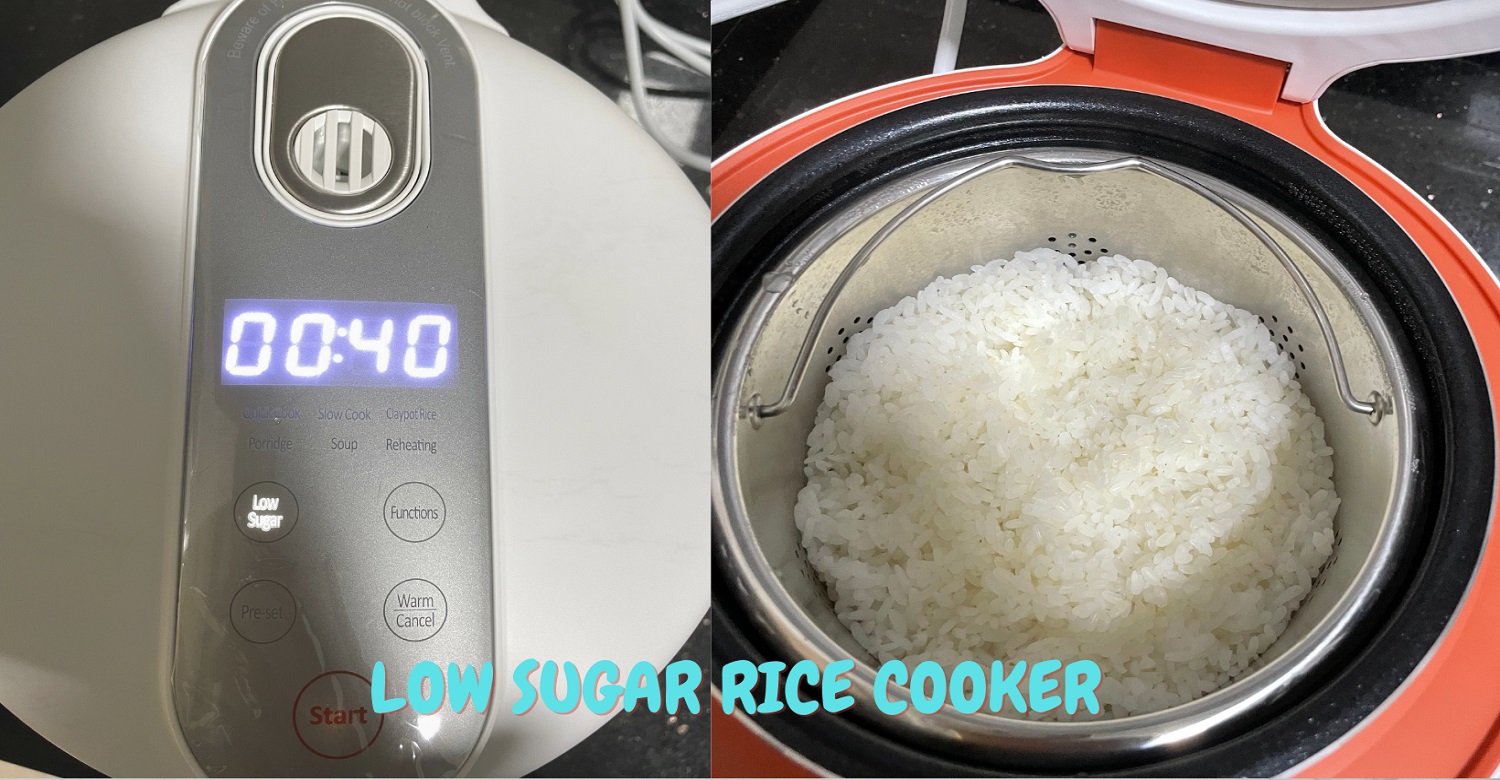As more people find alternative ways to keep their health a top priority, a healthy lifestyle always starts with what you eat. In my previous article Alternative Healthy Kitchen Appliances, we talk about how a Low Sugar Rice Cooker can be a good option to keep your blood sugar in check if rice is part of your everyday staple diet.
Although a low-sugar rice cooker has been on the market for quite some time, I learned that there are still other people who are not aware of this technology.
Today, please join me as we further digest what a Low Sugar Rice Cooker is to give an idea to those who are not familiar with this product!
What is a Low Sugar Rice Cooker
As we previously defined, the Low Sugar Rice Cooker employs rice-water separation technology that enables to lower the sugar content of the cooked rice.
I will be showing one design of a low sugar rice cooker and its concept of how it separates the rice grains from the water to achieve its purpose.
How does a low-carb rice cooker work?
There are many different designs of low-sugar rice cookers. However, the main idea is the same to lower the sugar content of the cooked rice.
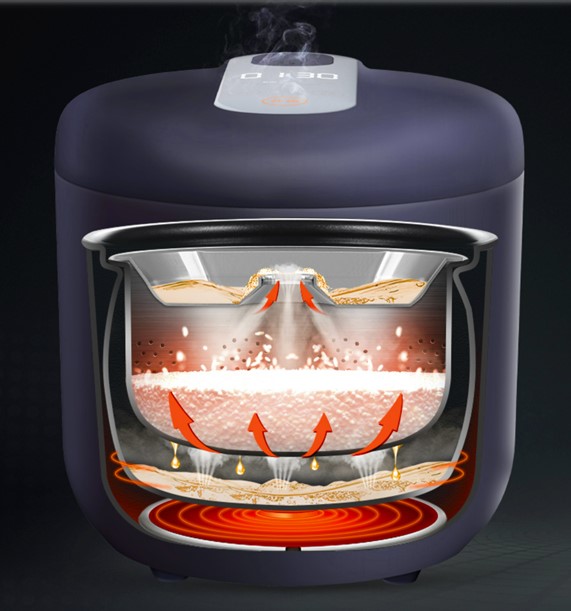
Taking into consideration how water separation design is employed to separate the water from the rice will depend on each brand’s approach to attain the desired results. Therefore, it has to be noted that each design will be different.
And whether or not the low sugar rice cooker works shall be subjected to lab tests.
Thus, it would be wise to ask for test reports to prove the effectiveness of the so-called lowering of the sugar content of the cooked rice.
Or you can find some reports online about low-sugar rice cookers that are already on the market.
Some independent organizations, especially the consumer protection council, do random tests to verify products marketed to protect consumers from false claims. And will normally release their findings for consumers’ information.
Main Parts and Accessories of Low Sugar Rice Cooker
Now let’s take a look at the low sugar rice cooker sample that I have and will focus our discussion on this particular model.
Main parts of Low Sugar Rice Cooker
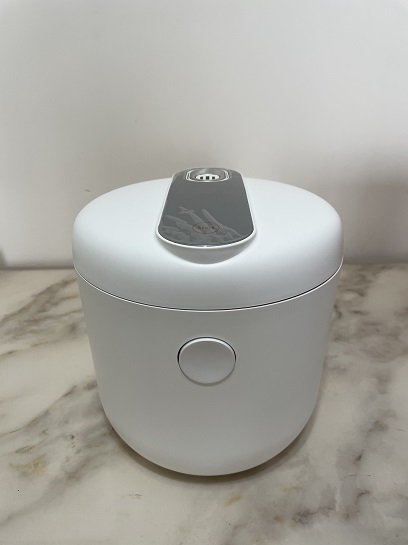
Main unit (overview)
This model is a multi-function low sugar mini rice cooker. It can be used to cook rice as normal or select low sugar function as desired.
Other functions – Quick cook, Slow cook, Claypot Rice, Porridge, Soup, Reheating
While pressing the Preset button can change cooking preset time.
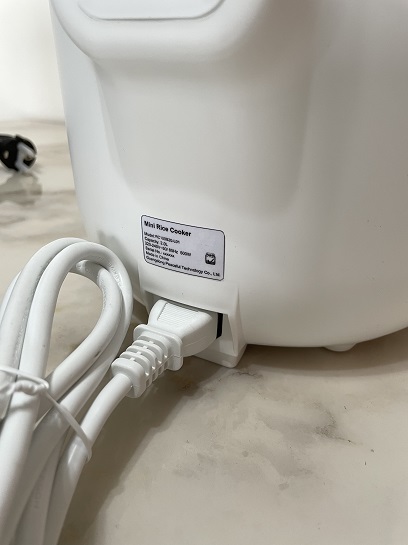
Rear side (AC cord socket)
The rear side of the unit is where the rating label can be found as well as the AC cord receptacle is located.
Power: 500W
Voltage/Frequency: 220-240V, 50/60Hz
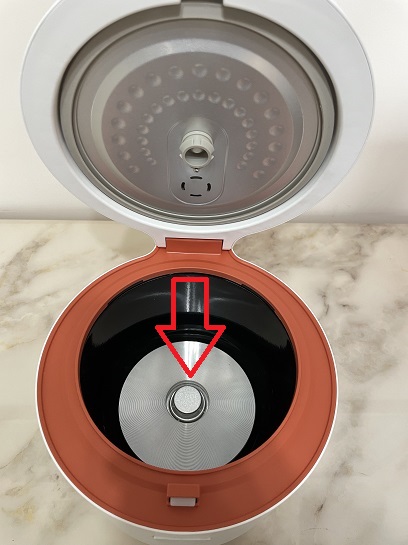
Heating plate
The heating plate employs NTC for precise temperature control.

Touch control panel and display
The top of the lid is where the controls and display is located.
Function button – press to select from the six different cooking functions.
Low Sugar button – press to activate low sugar cooking with cooking time preset at 40 minutes.
Start button – to activate function selection and to start cooking.
Warm/Cancel button – after the selected cooking is finished, the unit will default to Warm. Press the button to Cancel warm then the unit will go to standby.

Bottom side and non-slip rubber feet
The bottom side of the unit with four non-skid rubber fit installed.

Replaceable lid
The replaceable lid can be easily detached for convenience in cleaning after using the low sugar rice cooker.
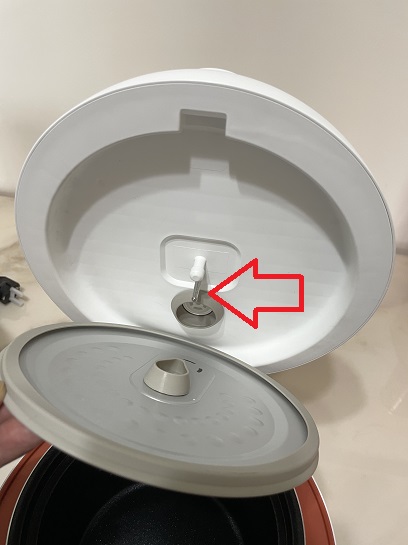
Temperature sensor probe
The thermal probe ensures there will be no water overflow.
During cooking, you will hear the thermal sensor cut-off sound. That ensures precise control of temperature to avoid overflow as water starts to boil.
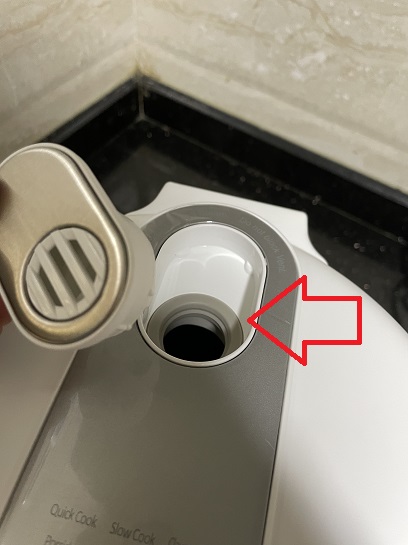
Steam vent
The steam vent cover can be detached for easy cleaning.
During cooking do not attempt to touch with your bare hand to avoid skin burn.

Top cover release button and hook
When the release button is pressed, the top cover will pop to open.
Depress the top cover to lock (you will hear a locking sound between the top cover and the hook)
Supplied Accessories
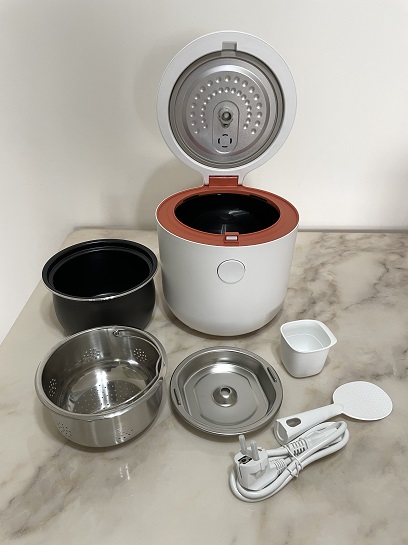
Supplied accessories overview
These are accessories included after opening the box.
Of course, there should be an instruction manual. But since this is a sample, thus manual was provided electronically.
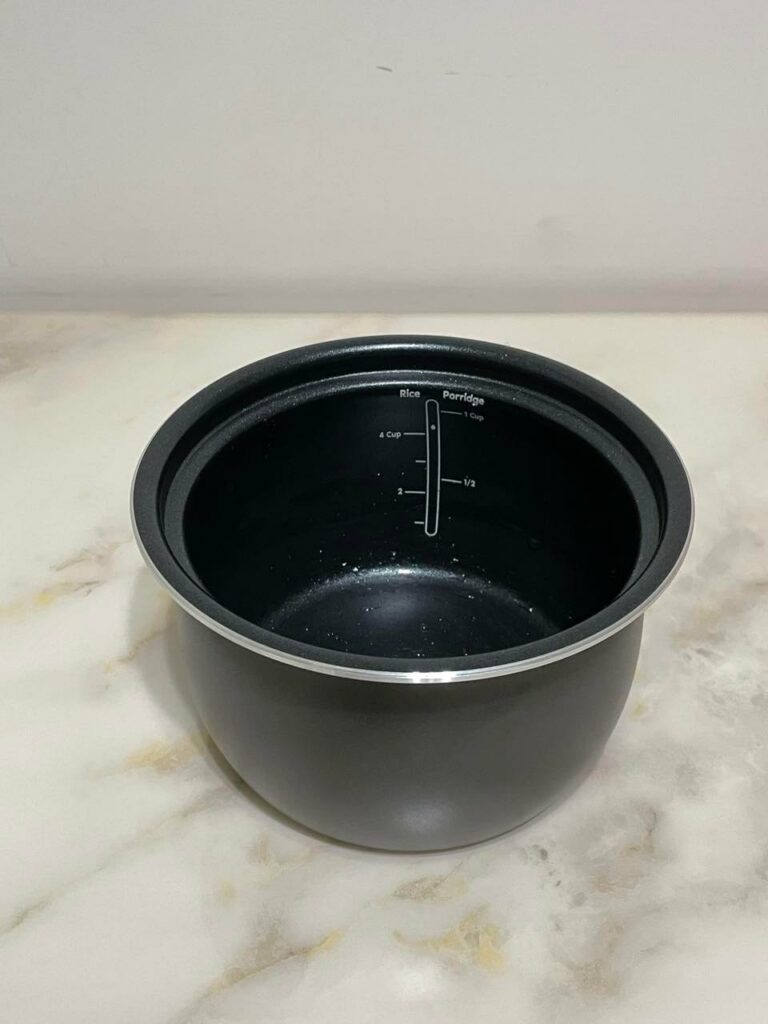
Non-stick inner pan
Non-stick inner pan with water marker.
Pan can be used to cook rice as normal, also can be used to cook soup, porridge, and reheating.
Capacity: 2.0L
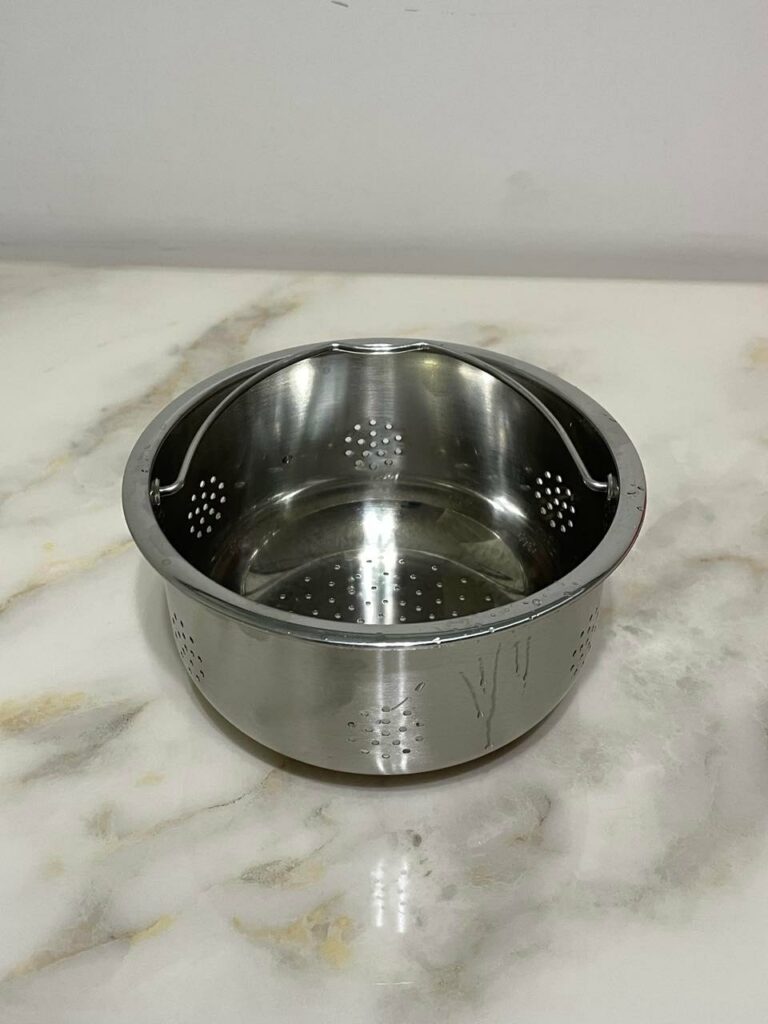
Stainless steel rice container
Stainless steel basket or rice container for low sugar rice cooking application.
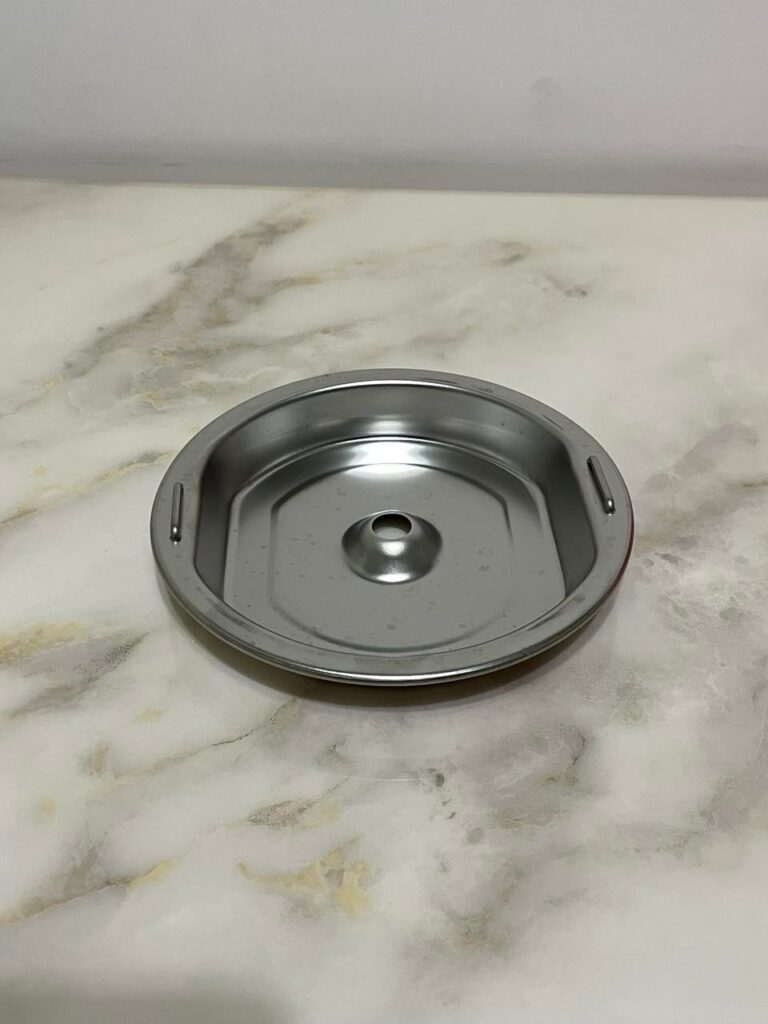
Stainless steel water container
Stainless steel water container ensures that sugar in its liquid form (water vapor) that goes up as steam escapes, does not come back to the rice.

Rice measuring cup
The supplied measuring cup is to ensure the water and rice ratio is satisfied to achieve the desired cooking result.

Rice spoon
A rice spoon is a normal accessory for any rice cooker.
Does low sugar rice cooker work?
Although some consumer reports are circulating on the internet stating that some brands of low sugar rice cookers do not meet or achieve the sugar content reduction as claimed.
However, there are also brands of low sugar rice cookers that can attain results as to how it is advertised.
Okay, at least there’s some good news…
Let’s do some actual cooking using my sample to see if it can do just the same. I’ll carry out actual rice cooking with Low Sugar as the function.
Method 1: Actual “Low Sugar” rice cooking utilizing rice container and water container!
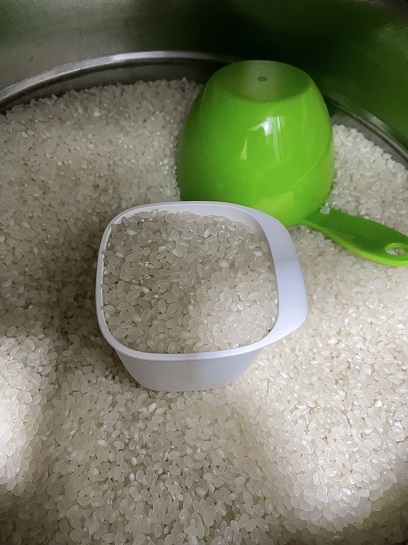
1 cup of rice grain
To test the sample low sugar mini rice cooker, I took 1 cup of rice.
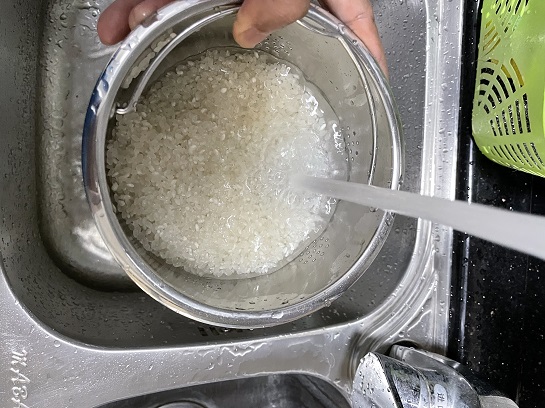
Stainless steel basket with 1 cup rice
The 1 cup of rice is put inside a rice basket and washed as a normal cooking process.

Inner pan water level
Always check instruction manual for special direction how much water will be needed when cooking using low sugar function.
For this particular model, it is suggested that the water must be over the rice about 3mm higher.
So you just have to estimate, in this example the water is around 1 3/4.
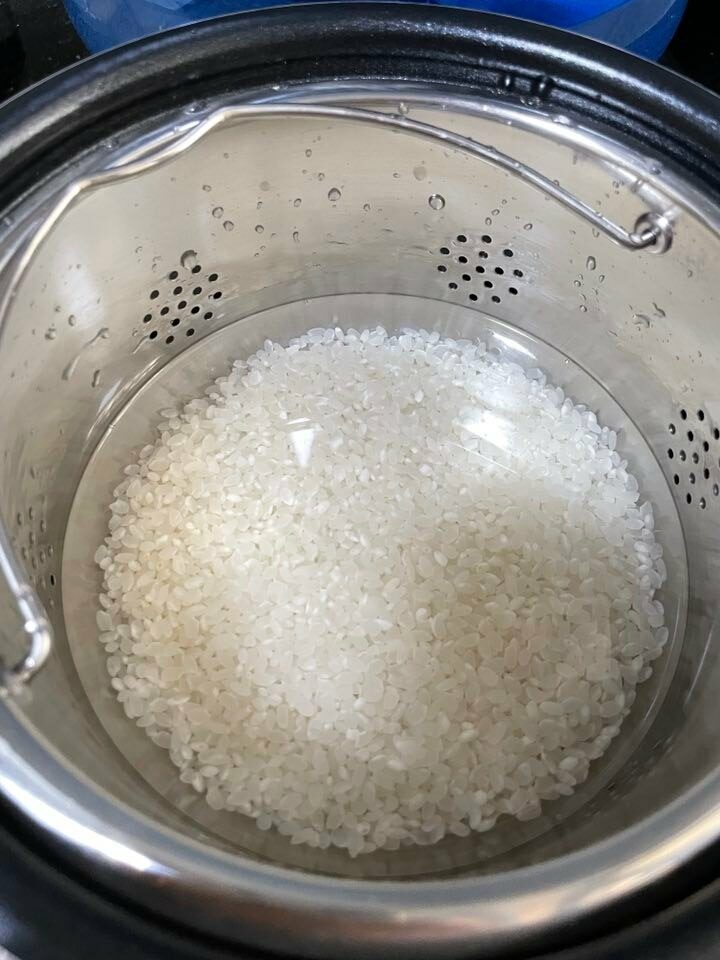
Stainless steel basket and water mixture
Preparation of rice and water is ready.
Take note the water is over the rice about 3mm high (as suggested in the instruction manual).
Please also note that the rice is inside the rice container, and the water is directly in the pan.

Water container installed
Making sure that I have placed on top the sugar extractor or water container
This is to ensure that the water vapor that escapes as steam is collected, and does not fall back onto the cooked rice.

Activated Low Sugar function
I have selected the low sugar function to the start cooking process as this is our objective.
40 minutes is the preset cooking time.
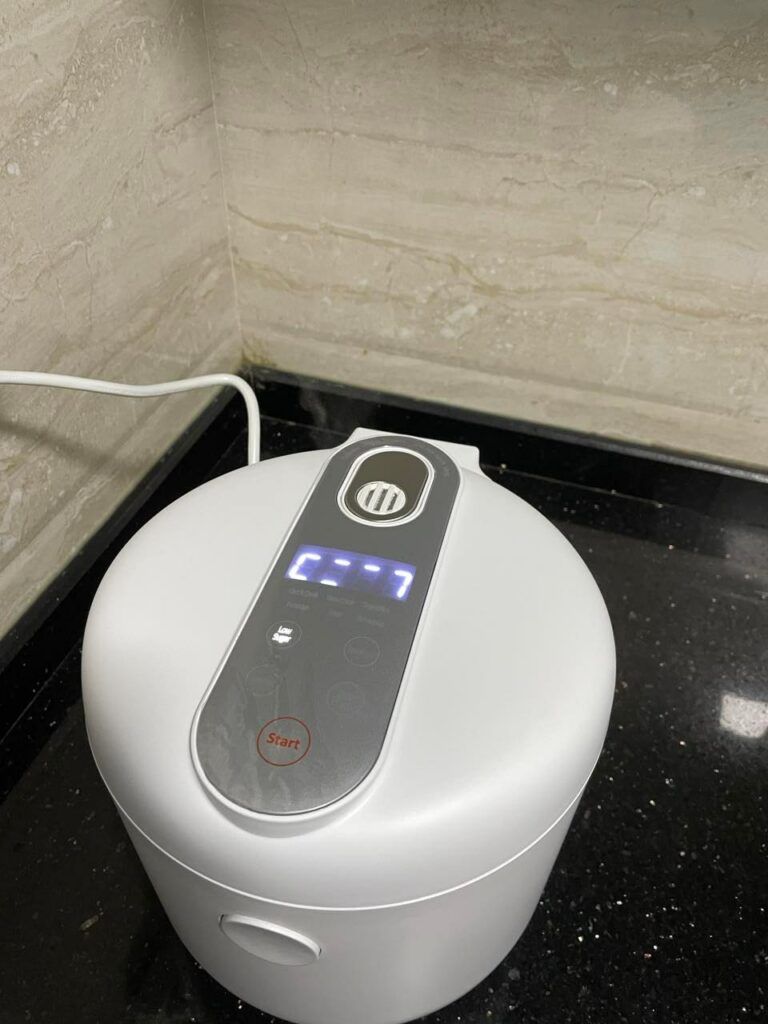
Press START
To begin cooking I have to press START button.
During cooking the time is not displayed. LED display forming a rectangular shape keeps scrolling during the cooking process.
About 10 minutes before the cooking end, the remaining time is displayed as it counts down to 00:00
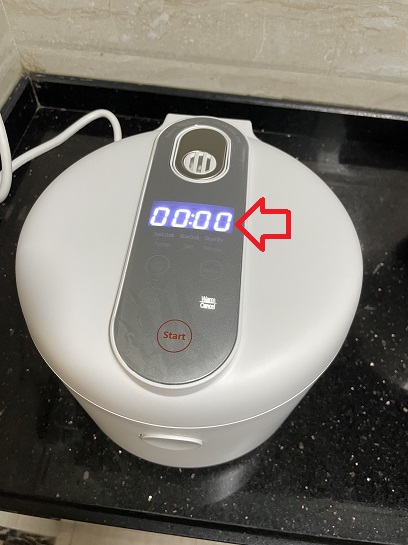
40 minutes cooking complete
The low sugar rice cooker sent a beep signal to end the cooking after 40 minutes.
And the display stops scrolling around and displayed 00:00
Then the unit goes to WARM mode, and the timer starts counting up.
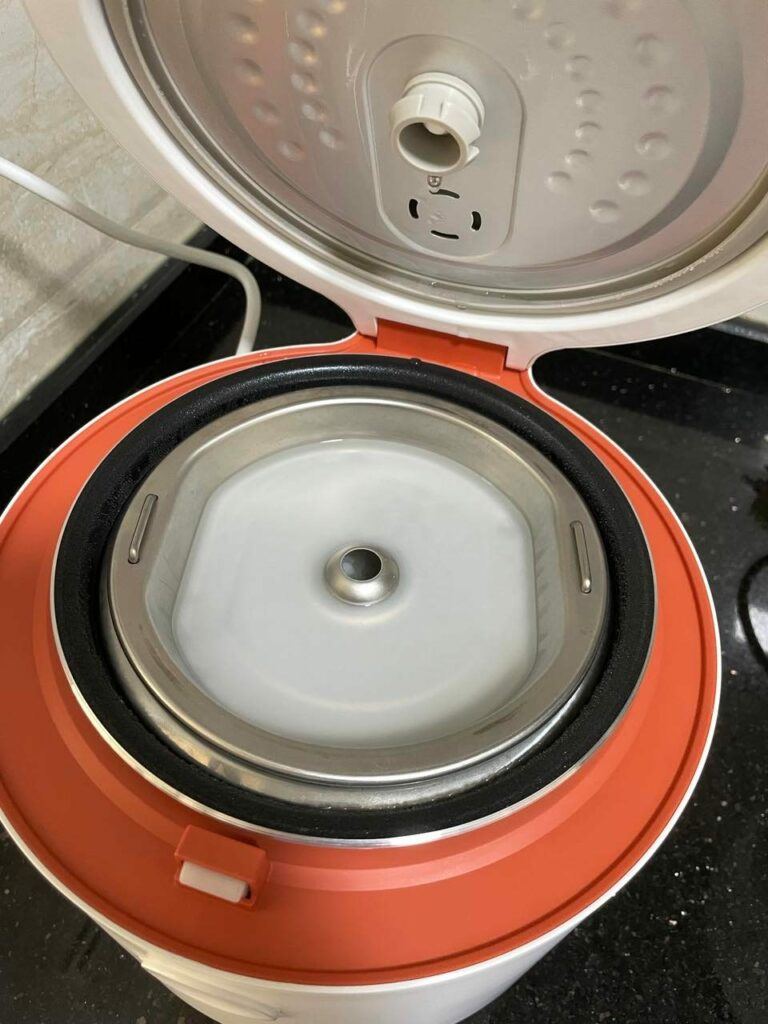
Collected water vapor
With a water level about 3mm higher than rice, a considerable amount of water was collected in the water container.

Cooked “low sugar” rice
The finished product- rice is cooked and well done.
Whether this cooked rice has reduced sugar content- I can’t tell.
But according to the factory’s test report, it can reduce starch content by 37% while carb is reduced by 36.79%.
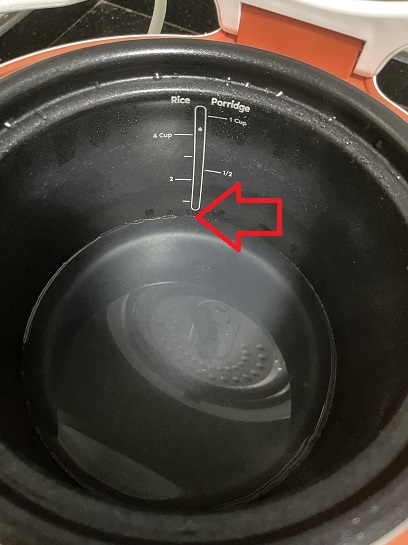
Remaining starch water
The remainder of the water at the bottom is starchy as I can distinguish by its color, and it’s a bit stiff or muggy.
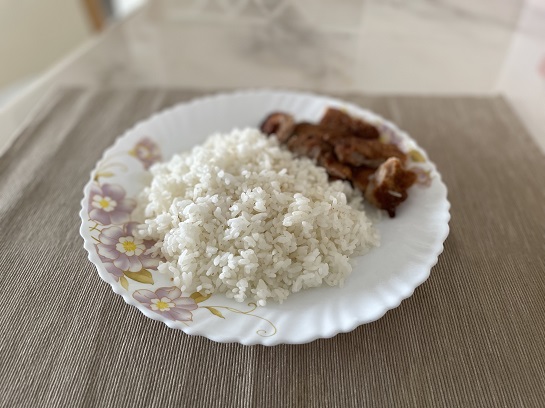
Cooked “low sugar” rice
The cooked rice does taste different from the normal rice cooking I used to do using a normal rice cooker.
Method 2: Actual “Low Sugar” rice cooking by only utilizing the water container!

Use the pan to cook directly with water and rice mixed
This time I only use the pan to cook 1 cup of rice and added 1 bar of water.
This is to see what will happen to the water after cooking.

Utilized water container to trap water vapor
For this simulation, I only utilize the water container to see if more water vapor can be collected.
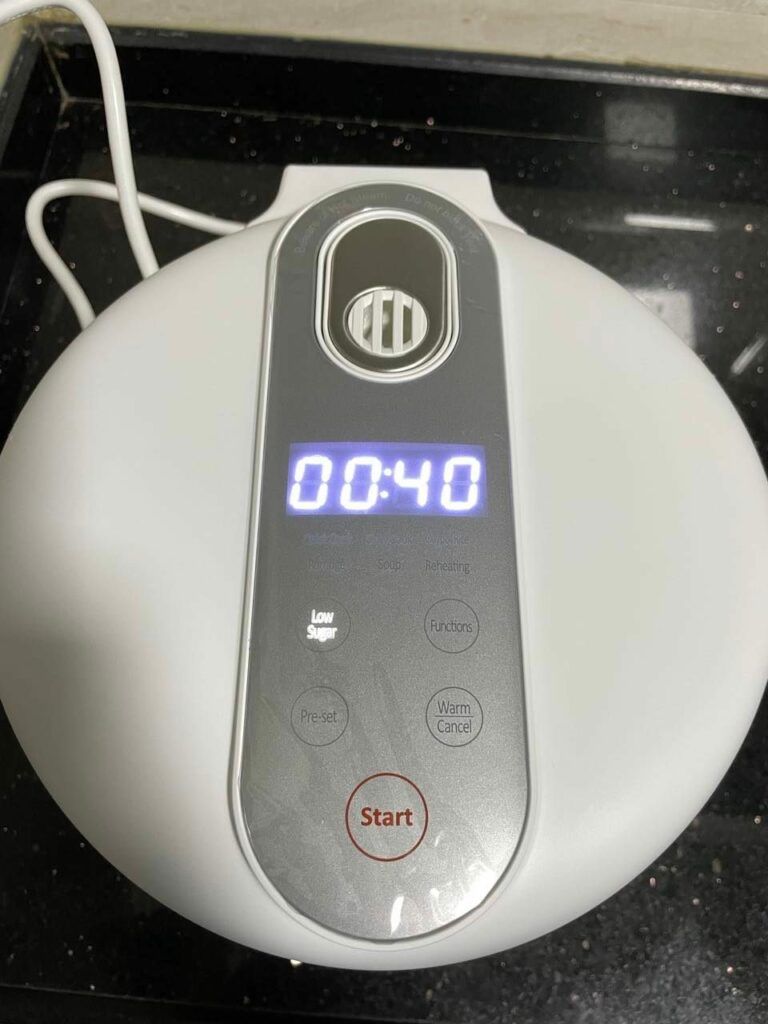
Activated Low Sugar function
For this cooking simulation, I have selected the low sugar function and the cooking time is also 40 minutes.
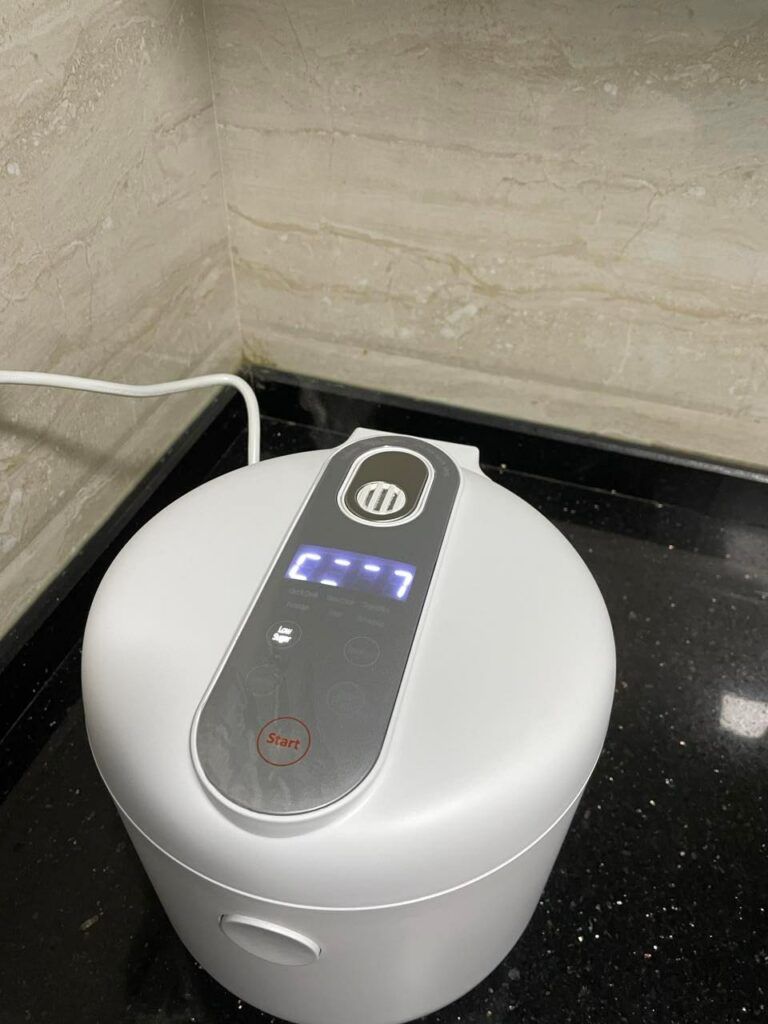
No water overflow all throughout cooking process
I did not observe any water spill or overflowing during the whole cooking process, the same case as method 1.
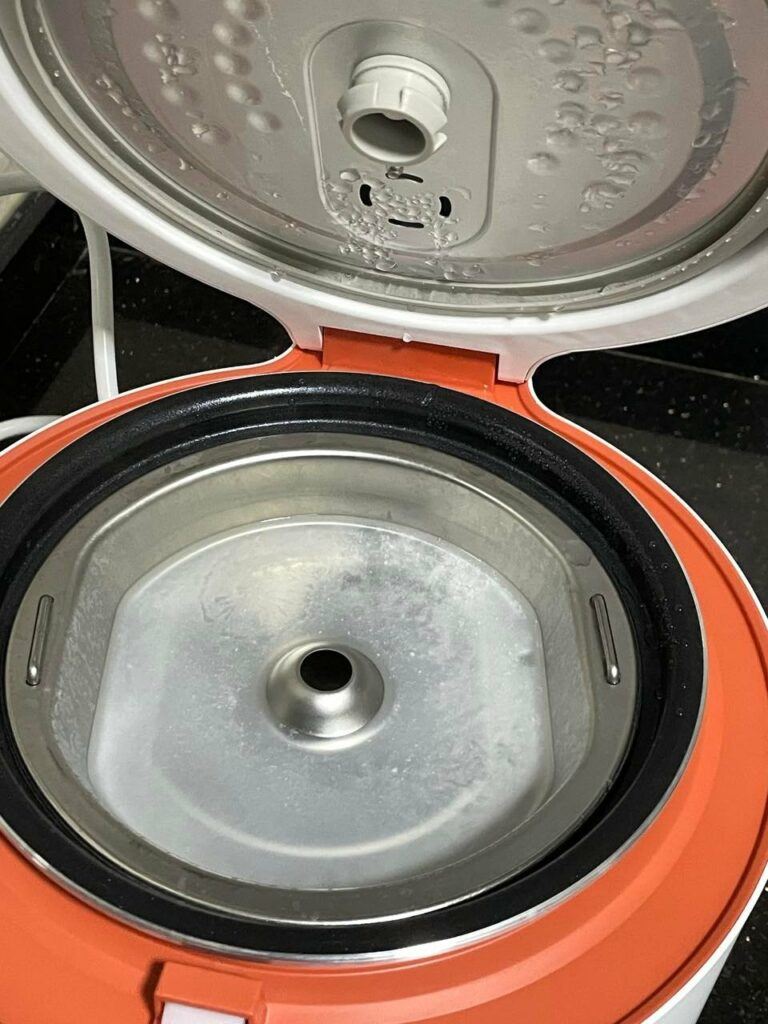
Collected starch water
This time a considerable amount of starch water was collected on the water container after reaching 40 minutes of cooking time.
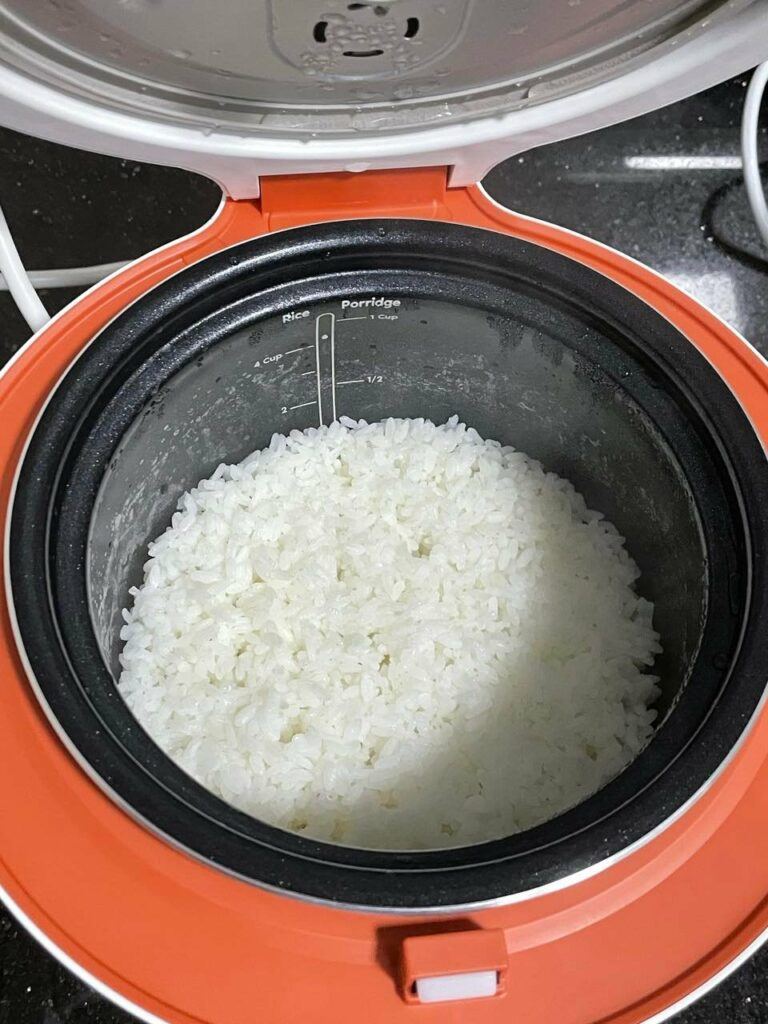
Cooked rice
Rice is cooked well and did not observe any water vapor.
However, there’s a noticeable white residue on the wall of the pan (which could be the dried starch)
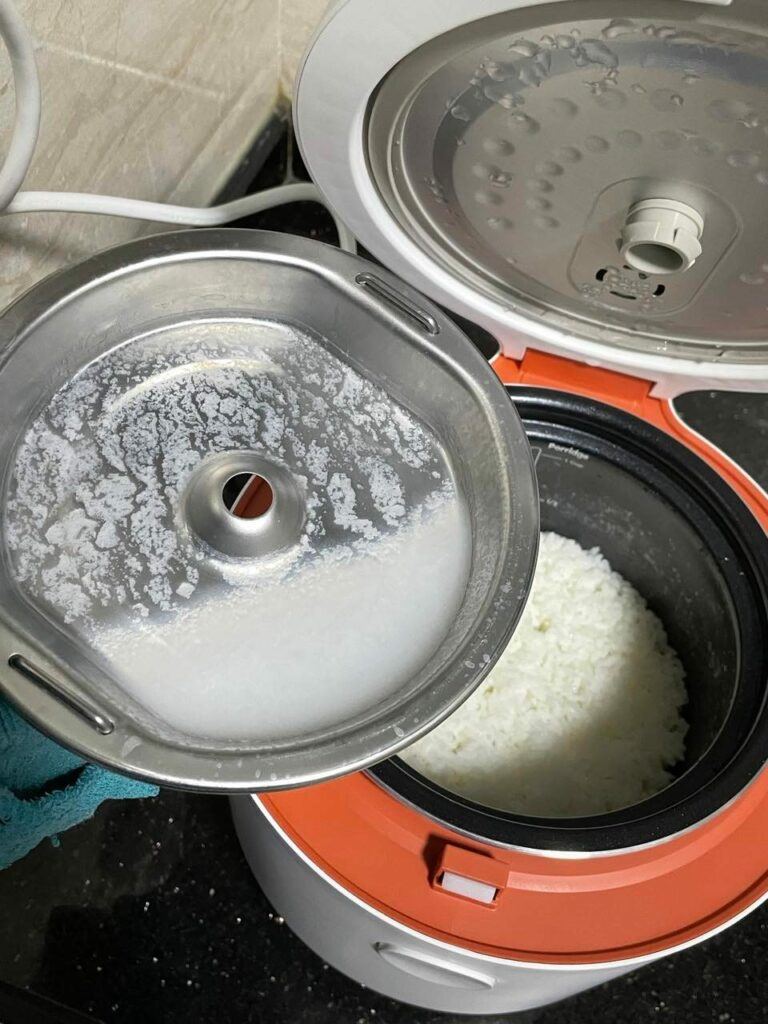
Water collected full of white particles
So basically the water collected is full of white particles which means the water container was able to trap starch and prevented it from falling back into the cooked rice.

Cooked rice with Low sugar?
I can’t tell whether the finished product has reduced the sugar content by only using the water container.
Using method 2, I can see starch residue is noticeable inside the pan.
This was not the case by utilizing method 1.
Method 3: Actual “Low Sugar” rice cooking by only utilizing the rice container!
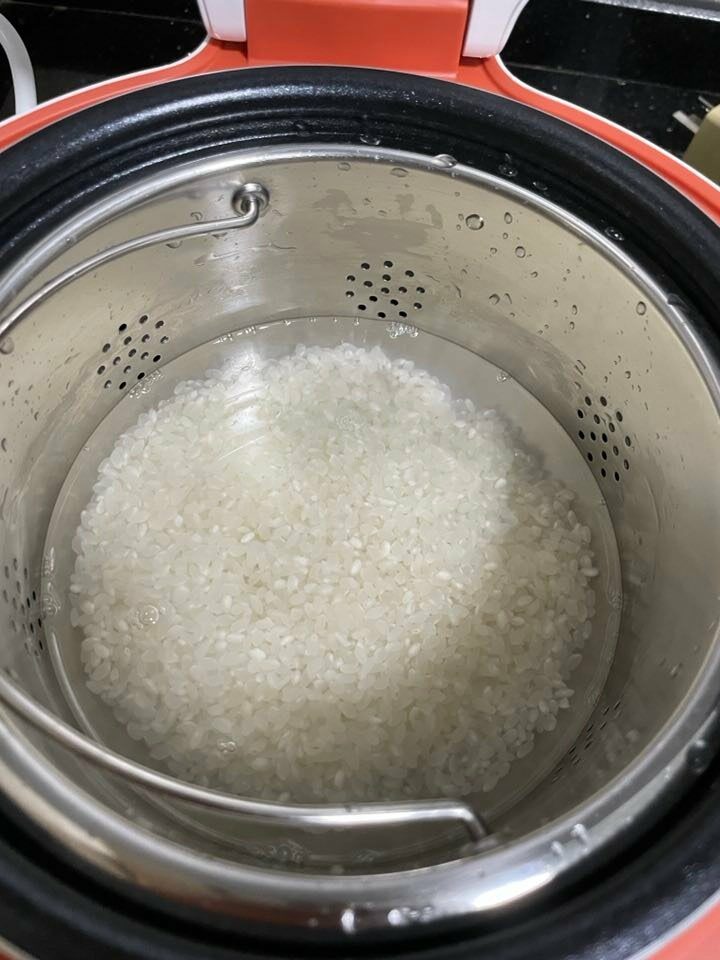
Cook 1 cup rice using rice container
This is to simulate what will happen cooking using the rice container only.
And as suggested in the instruction manual, I followed that water must be higher by about 3mm above the rice (this is just an estimate).

Cooking function selected – low sugar
Like method 1 and method2… the low Sugar function was also used for method 3.
The cooking time is the same, also 40 minutes.
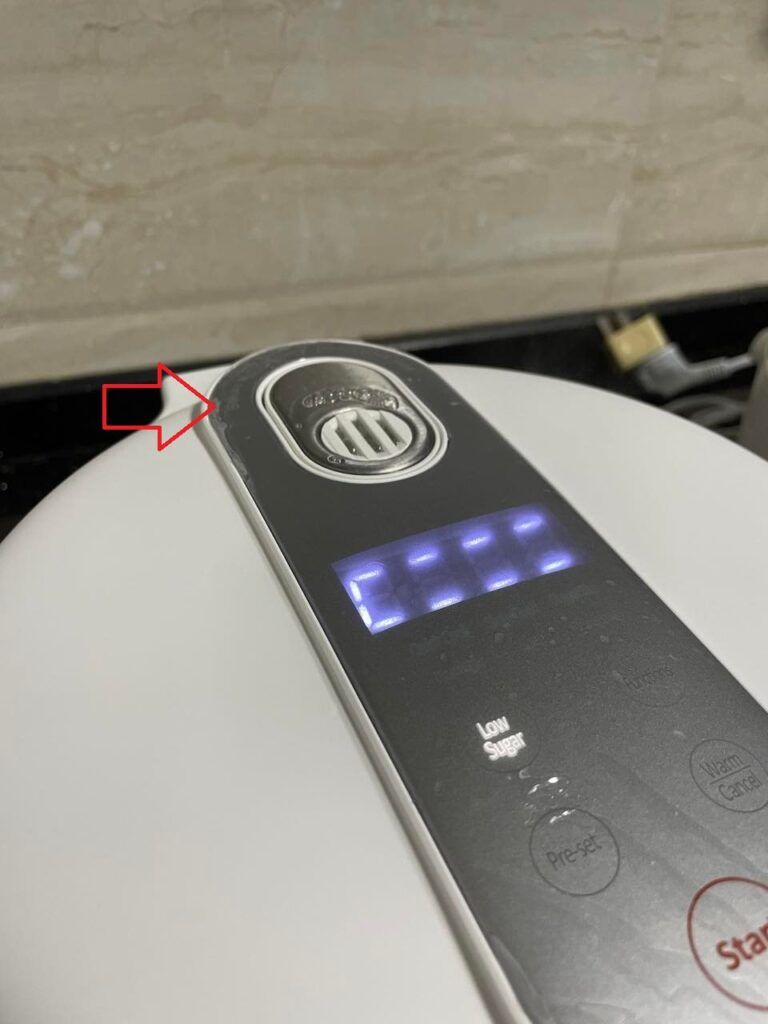
More steam was observed
During the cooking process, it was observed that more steam (water vapor) came out from the vent.
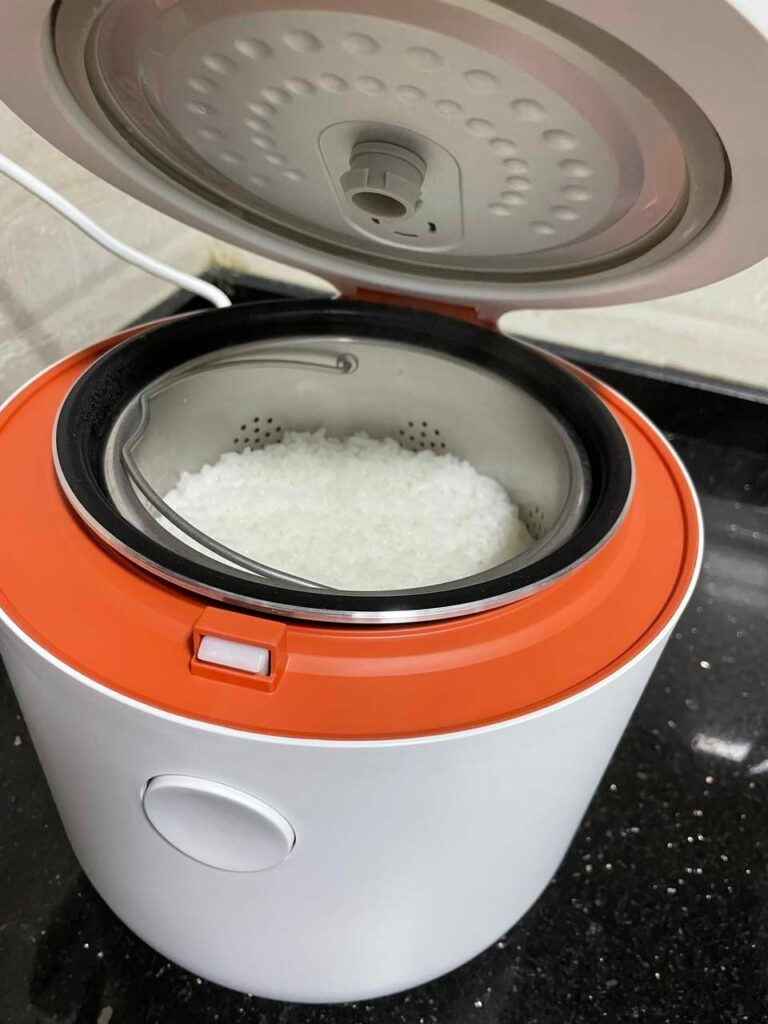
No water overflow was observed
Checked and did not observe water overflow inside the unit. The top rim was clear and there were no traces of water found.
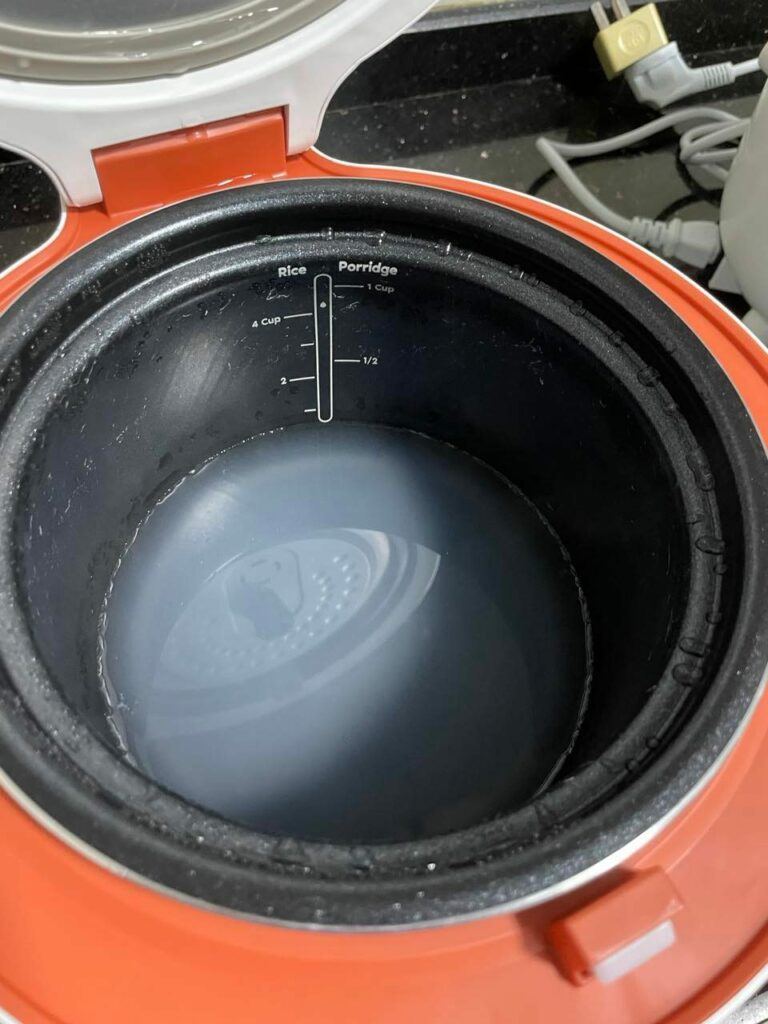
Remaining starch water
The remaining starch water can be seen clearly through its color.
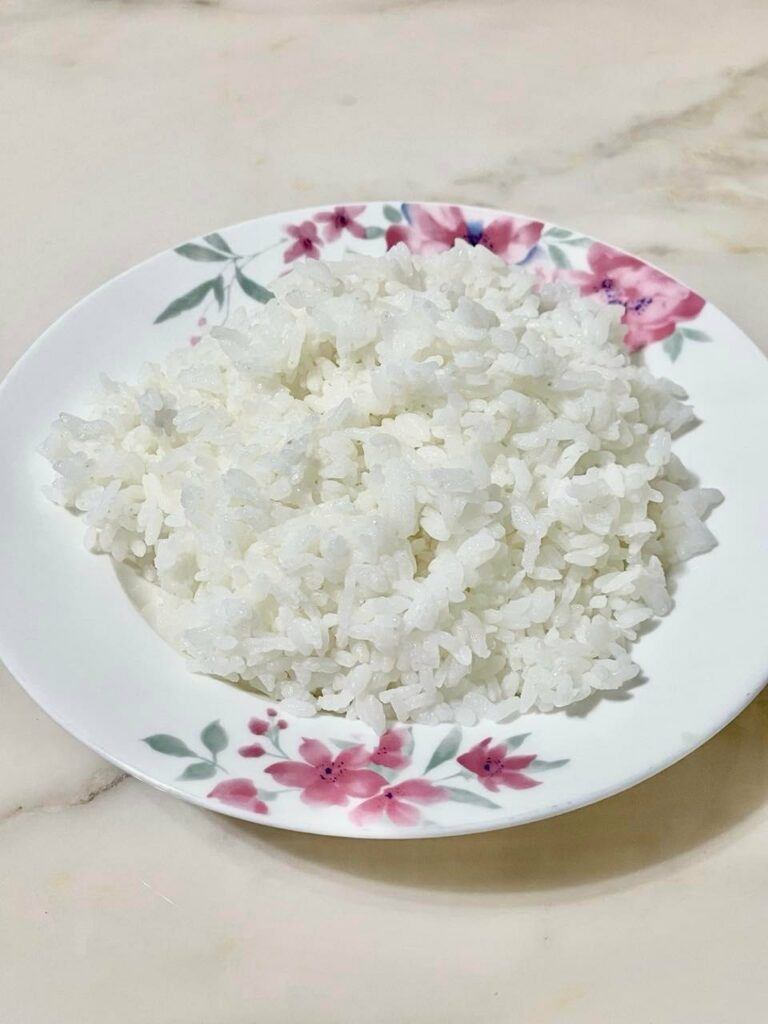
Cooked rice with Lower Sugar content?
I can’t tell whether the cooked rice has reduced the sugar content by only using the rice container.
But compared to method 2, the result of method 3 is better based on the appearance that I observed in the pan.
Note: 1. Read carefully the user's manual and check for special instructions about each cooking program. 2. Depending on the type of rice the amount of water may differ to get the best result as different rice varieties have different absorption rates. However, it will not affect the effectiveness of de-saccharification. 3. When using the "Low Sugar" function, it is suggested that the water should be more to get the best result (check the instruction manual).
Low sugar rice cooker third-party laboratory test report
To ensure that the sample I got is up to its promise as advertised, I have asked the supplier to provide me with the test report if it does reduce sugar content.
You’ll find the test report for the sample that I have discussed in this article below, both for the Normal rice cooking function and compared with the Low sugar rice function.

Based on the above test report this model can reduce carb content up to 36.79%.
And as far as I am concerned, I can give credence to the above test report as proof. That the mentioned low sugar rice cooker can reduce sugar content (as claimed) and as proven by the attached test report.
Conclusion
As exhibited above, we were able to cover the basics of the low sugar rice cooker. We have identified the main parts and its accessories.
We as well have established that the low sugar rice cooker does work, by carrying out actual cooking using the low sugar rice cooker to simulate water and rice separation… which is considered the technology behind the reduction of carb and or sugar content on the rice cooked using a low sugar rice cooker.
Based on the three simulated cooking methods done, using both the water container and rice container is best and should be utilized to get the desired result.
And I would be utilizing this low sugar mini rice cooker, after all, it has other functions that can be used depending on my cooking needs. But most importantly I want to curb the rice sugar content to keep myself away from type 2 diabetes.
Another way to keep ourselves from exceeding the amount of sugar is to control our intake. We are all aware of the fact that too much of anything is not good for our health and it applies to the amount of rice we take which is known as a heavy source of carbohydrates.
By the way, if anyone is interested in the model featured in this article… the MOQ is one 40HQ (2432pcs) and it is also available in black color.
So there you have it folks, thank you for reading. If you find this article helpful, or you have some questions or suggestions, please leave a comment below. I will answer them as soon as I can to the best of my knowledge.
